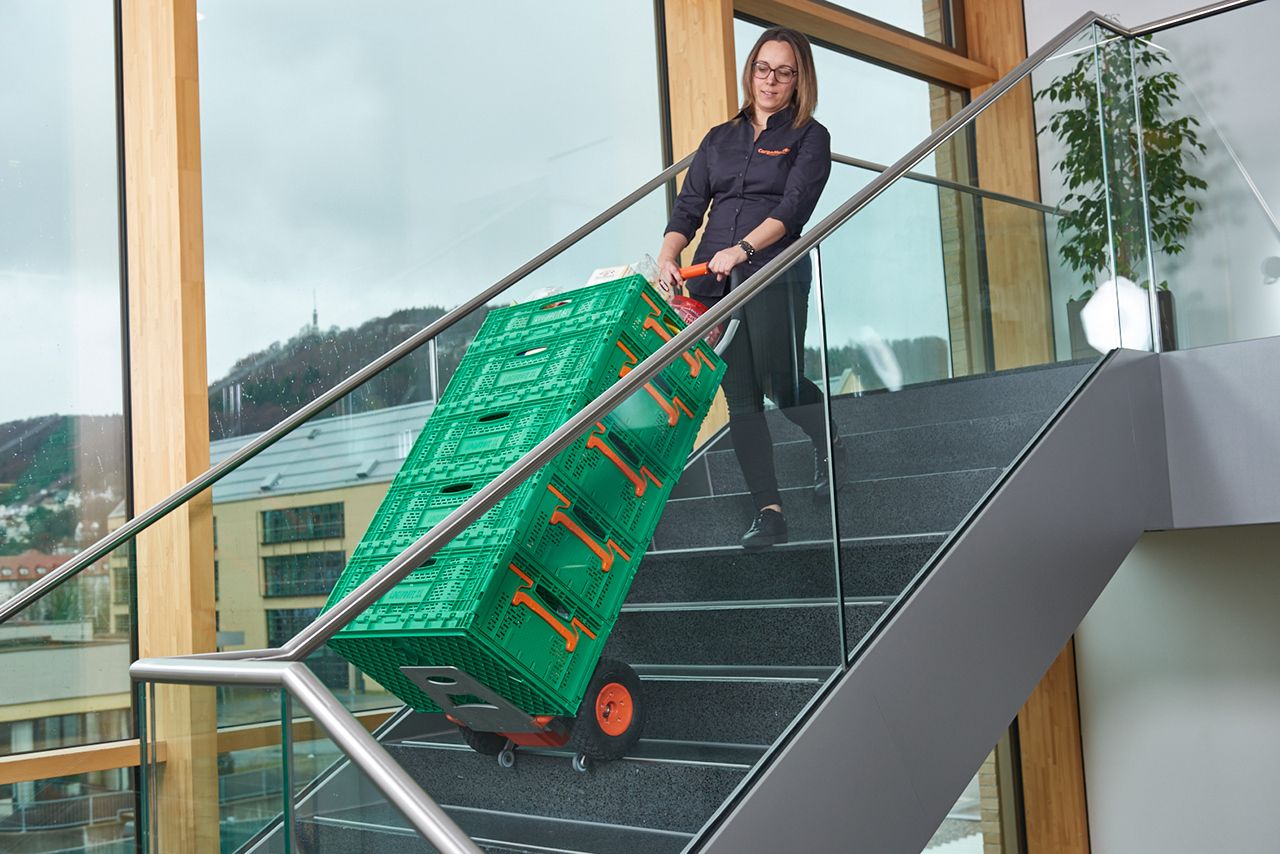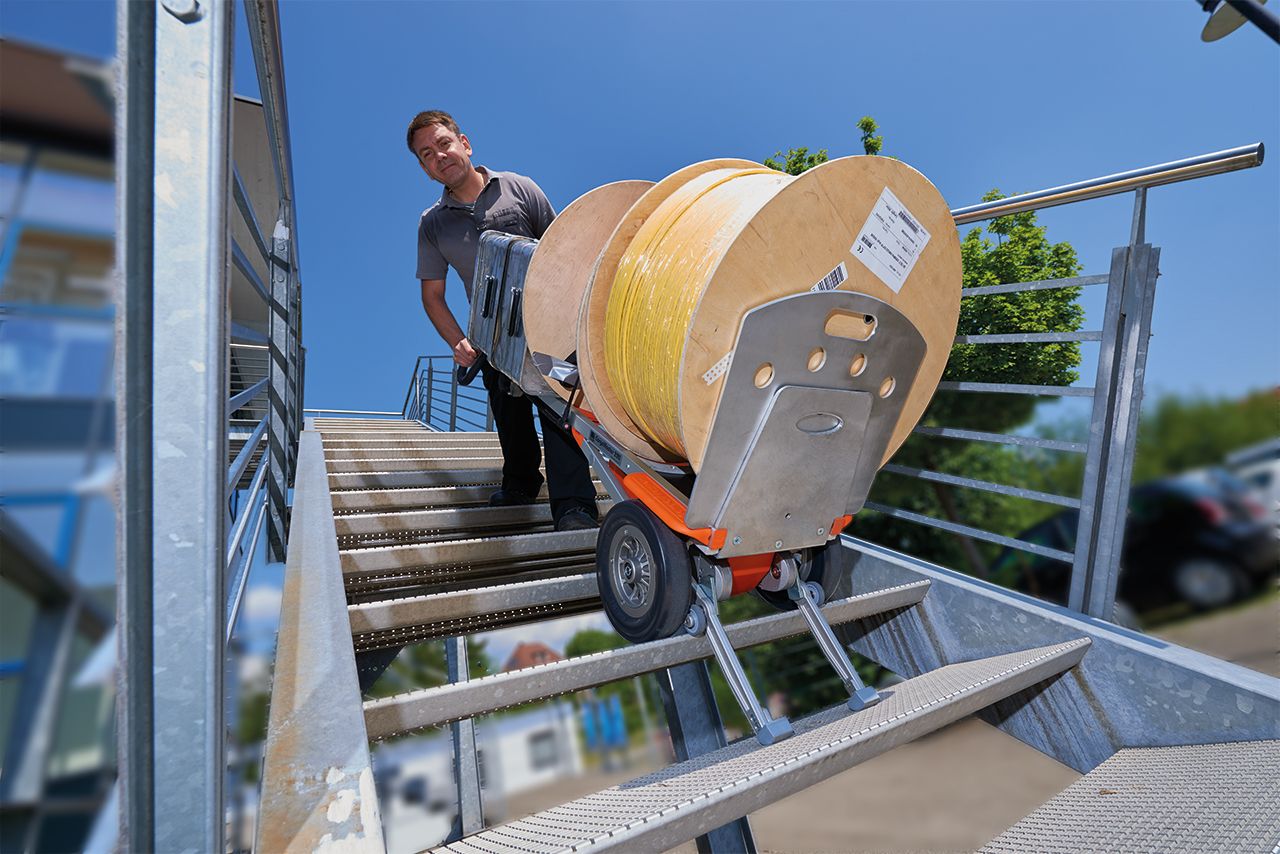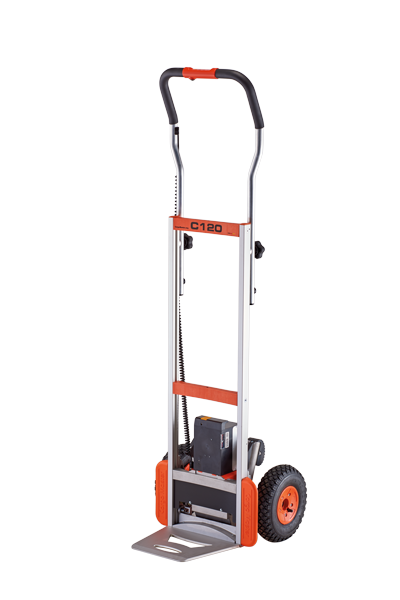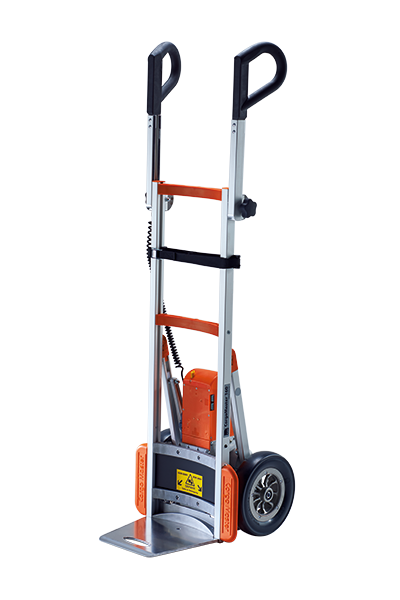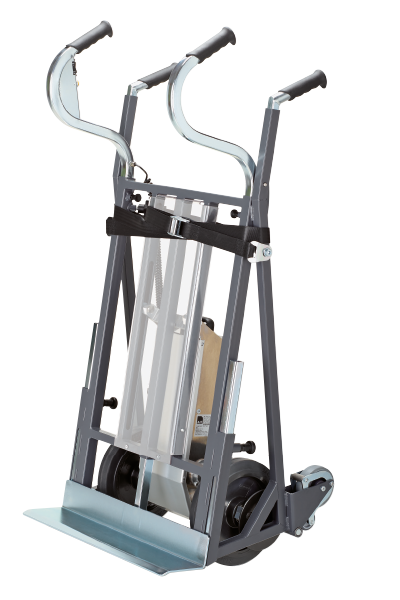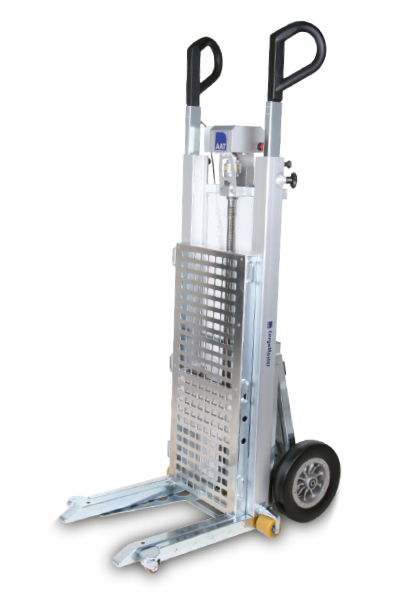Ein typisches Beispiel ist die Logistik- und Versandbranche, in der häufig schwere Pakete, Paletten mit Waren oder sogar Haushaltsgeräte wie Waschmaschinen und Kühlschränke über Treppen transportiert werden müssen. Ohne geeignete Hilfsmittel sind die Mitarbeiter hohen Belastungen ausgesetzt, was das Verletzungsrisiko erheblich erhöht.
Im Facility Management und der Gebäudereinigung sind es oft Reinigungsgeräte wie Industriestaubsauger, Hochdruckreiniger oder Eimer mit Wasser und Reinigungsmitteln, die über mehrere Stockwerke hinweg getragen werden müssen. Auch hier führt das ständige Heben und Tragen schwerer Lasten zu körperlichen Belastungen, die langfristig zu Schäden führen können.
Umzugsunternehmen stehen regelmäßig vor der Herausforderung, Möbel, Kartons, Haushaltsgeräte oder auch schwere Schränke und Klaviere über enge Treppenhäuser zu transportieren. Diese Tätigkeiten sind nicht nur körperlich anstrengend, sondern auch gefährlich, wenn keine geeigneten Hilfsmittel zur Verfügung stehen.
In der Bau- und Handwerksbranche müssen schwere Baumaterialien wie Zementsäcke, Ziegel, Rohre und Werkzeuge oft in höhere Stockwerke gebracht werden. Besonders auf Baustellen ohne Aufzug stellt dies eine erhebliche Belastung für die Mitarbeiter dar.
Auch im Einzelhandel und Großhandel gibt es Situationen, in denen Waren wie schwere Kartons mit Vorräten, Getränkekisten oder große Elektrogeräte über Treppen transportiert werden müssen, um sie in Lager oder Verkaufsräume zu bringen.
Auch im Event- und Messebau müssen oft schwere Bühnenelemente, technische Ausrüstung oder Dekorationen über mehrere Etagen transportiert werden, was ebenfalls eine erhebliche körperliche Belastung darstellt.




